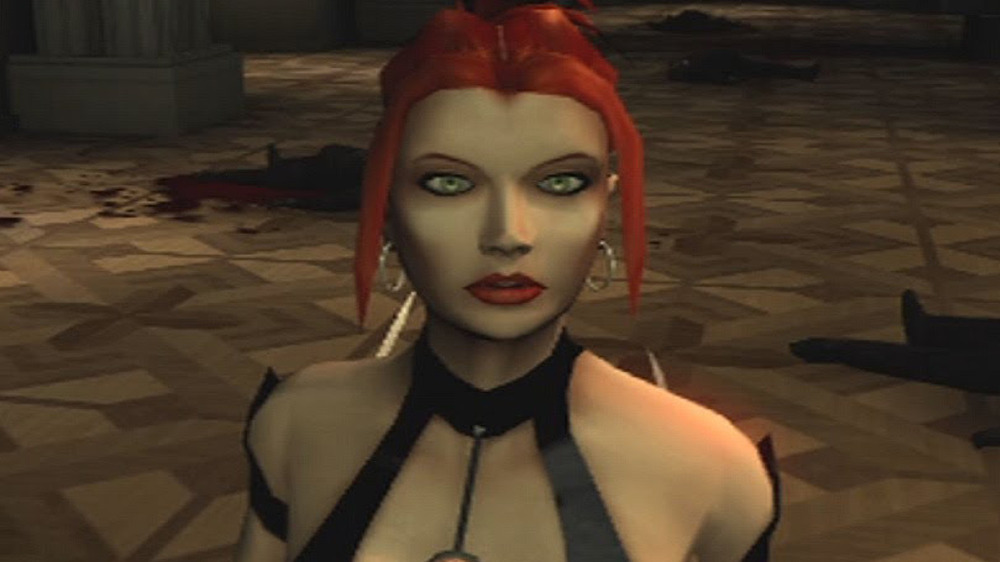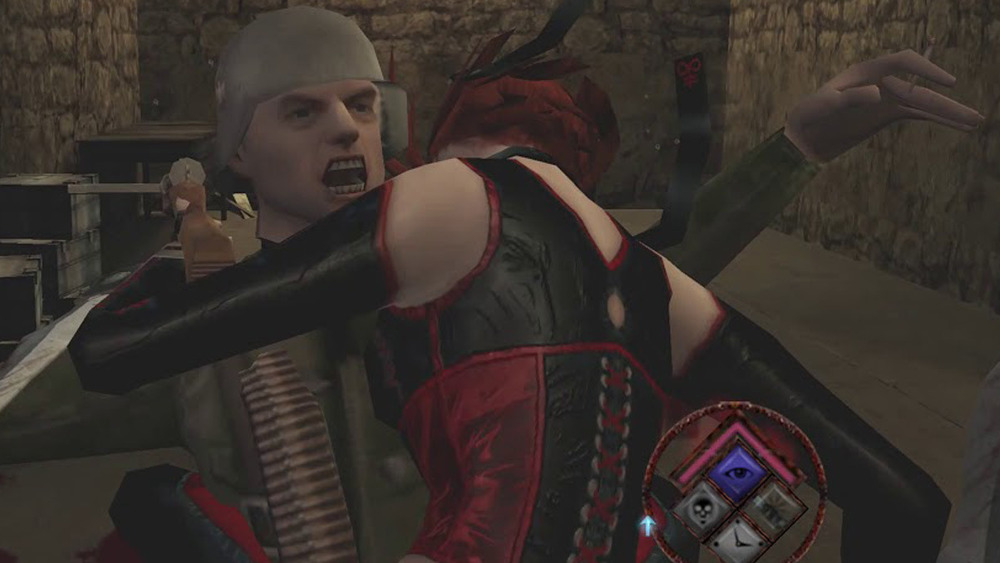This Is Why BloodRayne Became A Cult Classic
Supernatural themes are a dime a dozen whenever it's time to pick up a controller and go to work.
Gamers have gotten quite accustomed to shooting down waves of zombies, terrorizing teens as horror film icons, hunting down spooky ghosts, etc. Werewolves, vampires, and even the rare sight of a succubus or a sasquatch have appeared in all sorts of games.
These titles have ranged wildly in quality, of course. For every great Resident Evil series entry and a classic like the Legacy of Kain: Soul Reaver, there's garbage-quality games like Overkill's The Walking Dead.
There's another game that centers itself in the realm of the supernatural that's a bit mediocre from a mechanical sense. But for some reason, it ended up gaining steam among those who played it and even got itself a sequel later on. That game is Bloodrayne, a third-person shooter/slasher that's all about wreaking havoc as a crimson-haired vampiress.
The original BloodRayne grabbed everyone's attention
BloodRayne debuted in 2002.
The premise of the game is easy to wrap your head around – players take control of a half-vampire woman named Rayne and bring the pain to Nazis and otherworldly beasts in an effort to disrupt their apocalyptic. Thanks to the game's gratuitous violence and sex appeal, it managed to leave quite the impression on everyone that played it. While it earned a bad review here and there, the original BloodRayne holds a respectable Metacritic score of a 75.
After the first game's shocking success, Rayne reappeared in a sequel (2004's BloodRayne 2), a spinoff side-scroller (BloodRayne: Betrayal), as well a remastered collection (BloodRayne: Terminal Cut and BloodRayne 2: Terminal Cut). She even got to spill some blood on the big screen via a series of movie adaptations from director Uwe Boll. Those films didn't quite reach the cult status of their source material, however.


